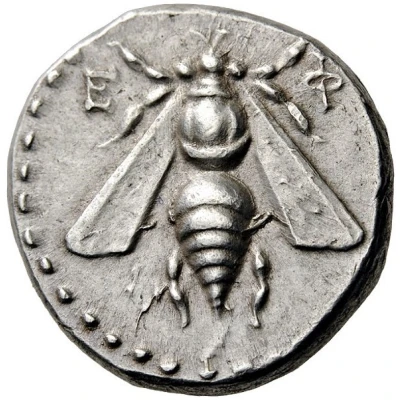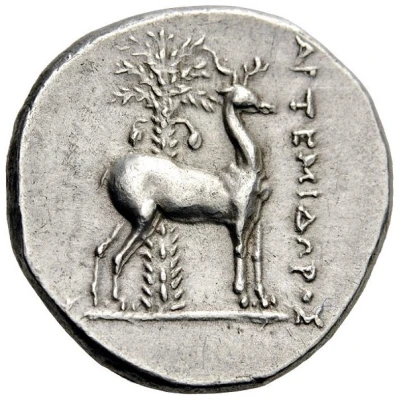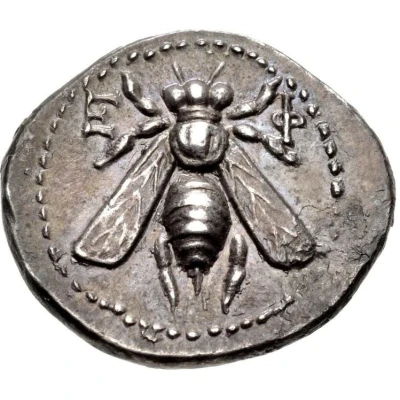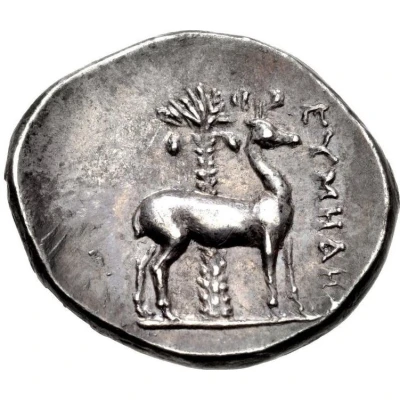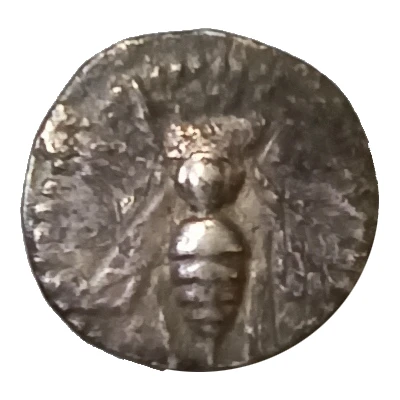
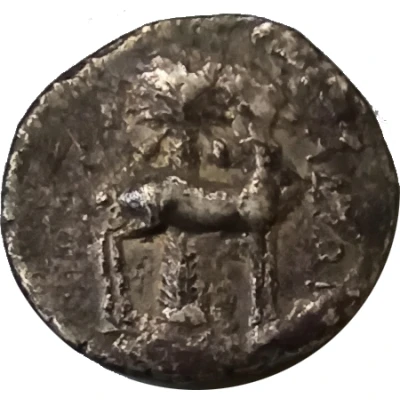

Drachm - Badromios 202 BC - 150 BC
| Silver | 4.10 g | 18 mm |
| Issuer | Ephesos (Ionia) |
|---|---|
| Type | Standard circulation coin |
| Years | 202 BC - 150 BC |
| Value | Drachm (1) |
| Currency | Drachm |
| Composition | Silver |
| Weight | 4.10 g |
| Diameter | 18 mm |
| Shape | Round (irregular) |
| Technique | Hammered |
| Demonetized | Yes |
| Updated | 2024-10-10 |
| Numista | N#283451 |
|---|---|
| Rarity index | 97% |
Reverse
Stag standing right and behind, daither palm tree
Script: Greek
Lettering: BA∆POMIOΣ
Translation: (Magistrat) Demetrios
Comment
NC 1999, S. 84. Schrötlingsriss, sonst vorzüglichWhen the Seleucid king Antiochus III the Great tried to regain the Greek cities of Anatolia, he came into conflict with Rome. After a series of battles, he was defeated by Scipio Asiaticus at the Battle of Magnesia in 190 B.C. As a result, Ephesus came under the rule of the Attalid king of Pergamon Eumenes II. In 133 B.C., when his grandson Attalus III died without male children of his own, he left his kingdom to the Roman Republic.
Interesting fact
The Drachm - Badromios coin from Ephesos (Ionia) was used as a form of currency during the Hellenistic period, specifically between 202 BC and 150 BC. Its obverse side features the image of a bee, which was a symbol of Ephesos and represented the city's prosperity and wealth. The coin's reverse side depicts a stag, which was a common motif in ancient Greek coinage and represented strength and power. The use of these symbols on the coin highlights the cultural and economic significance of Ephesos during this period.
